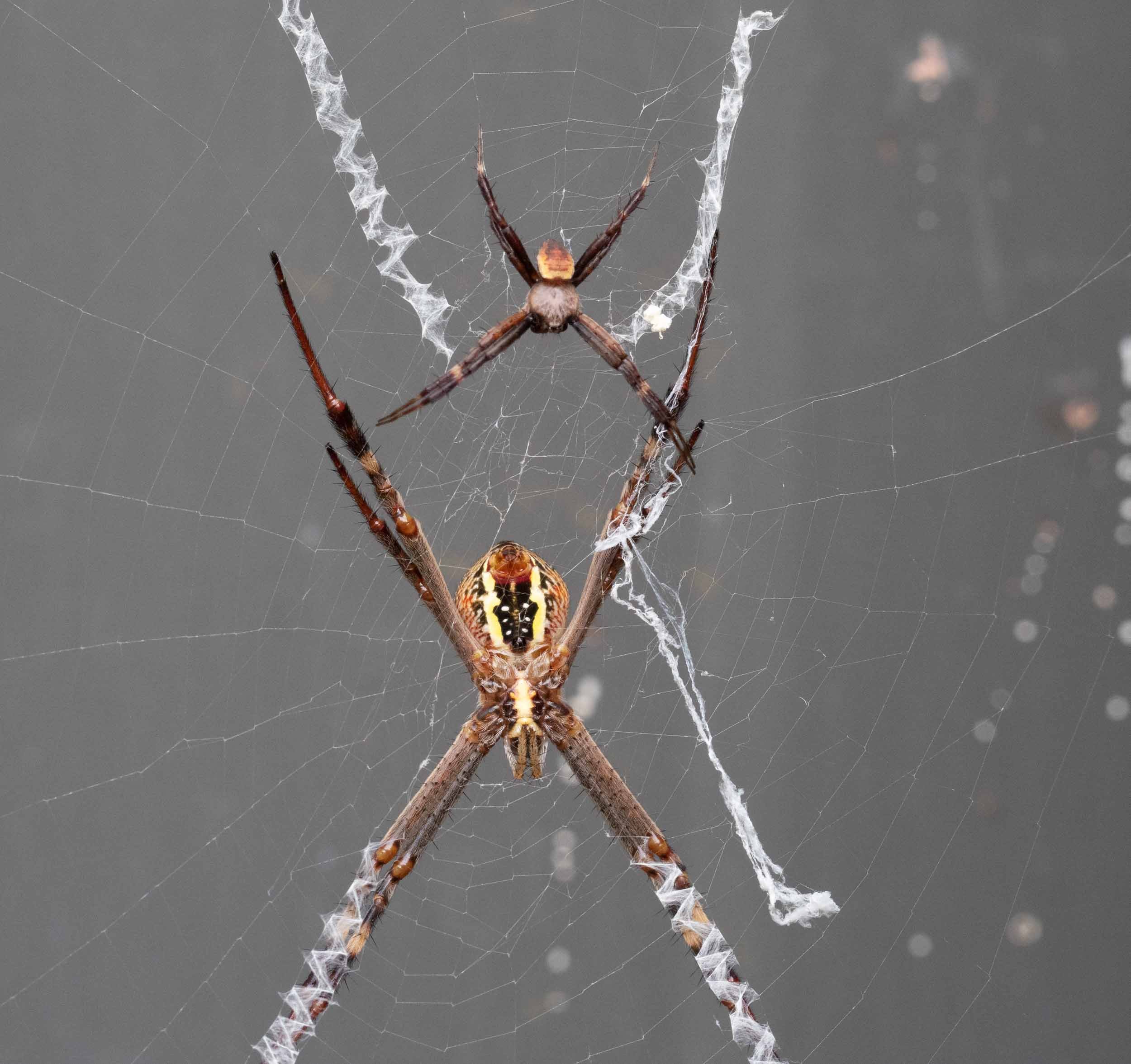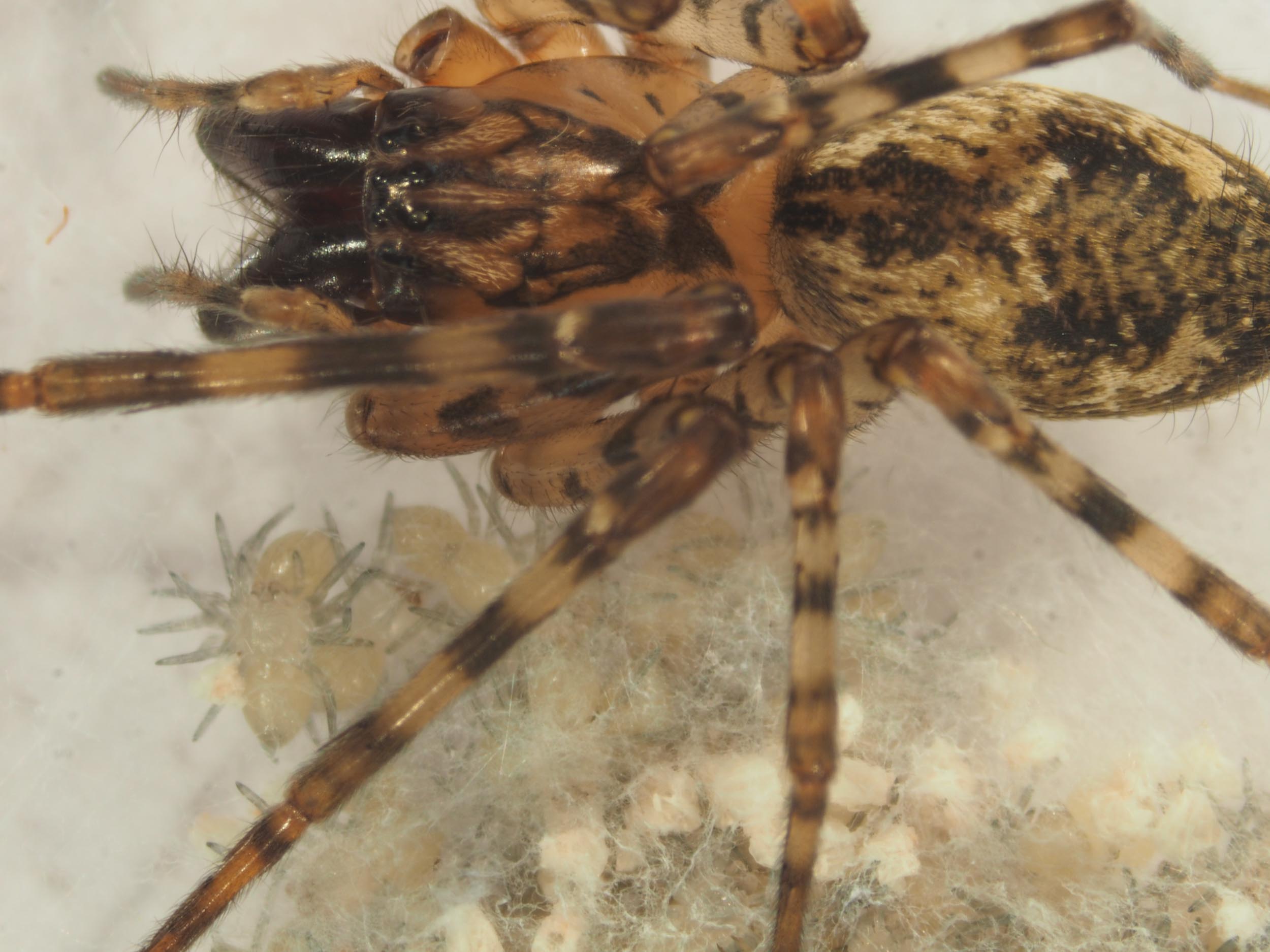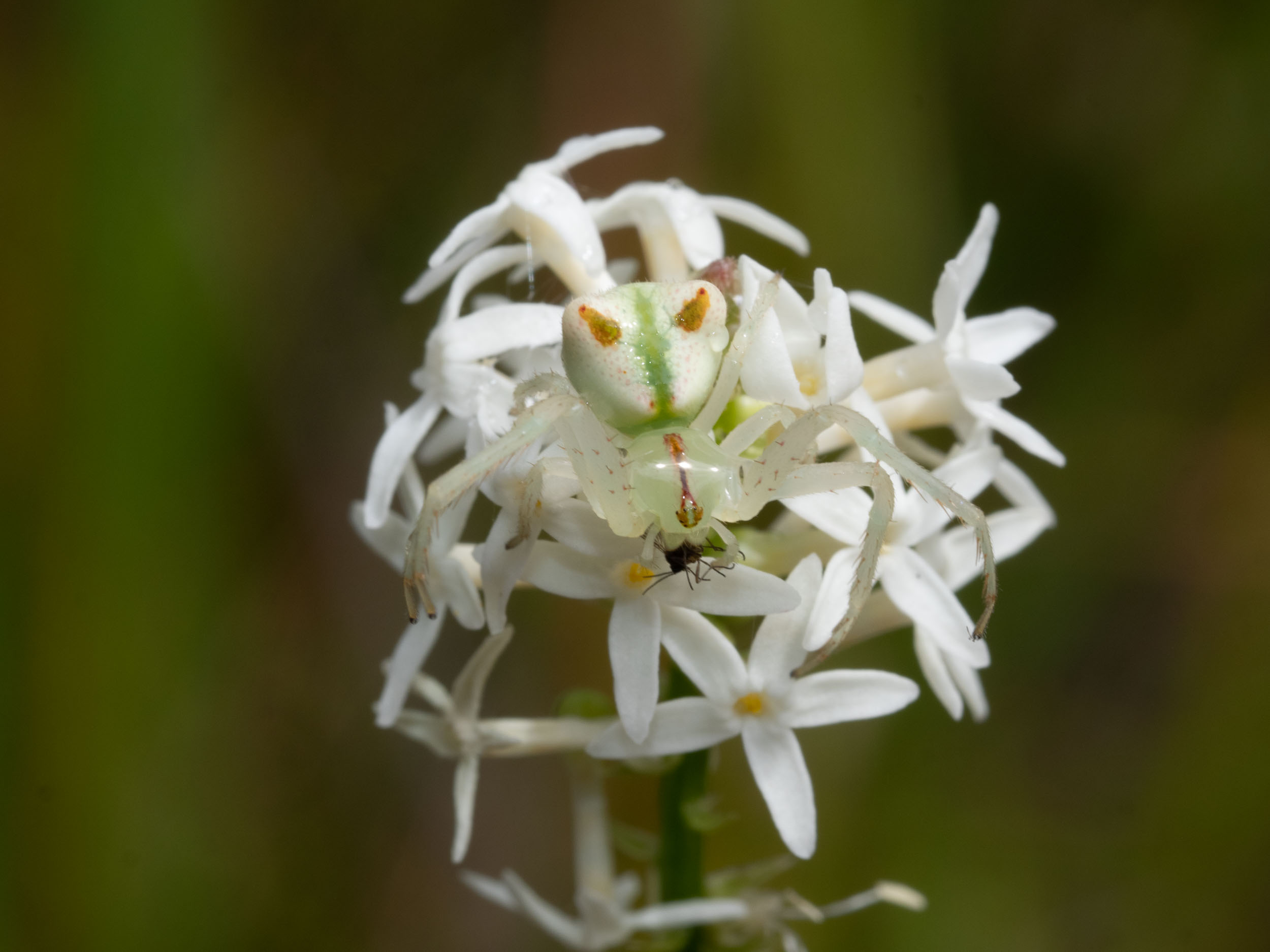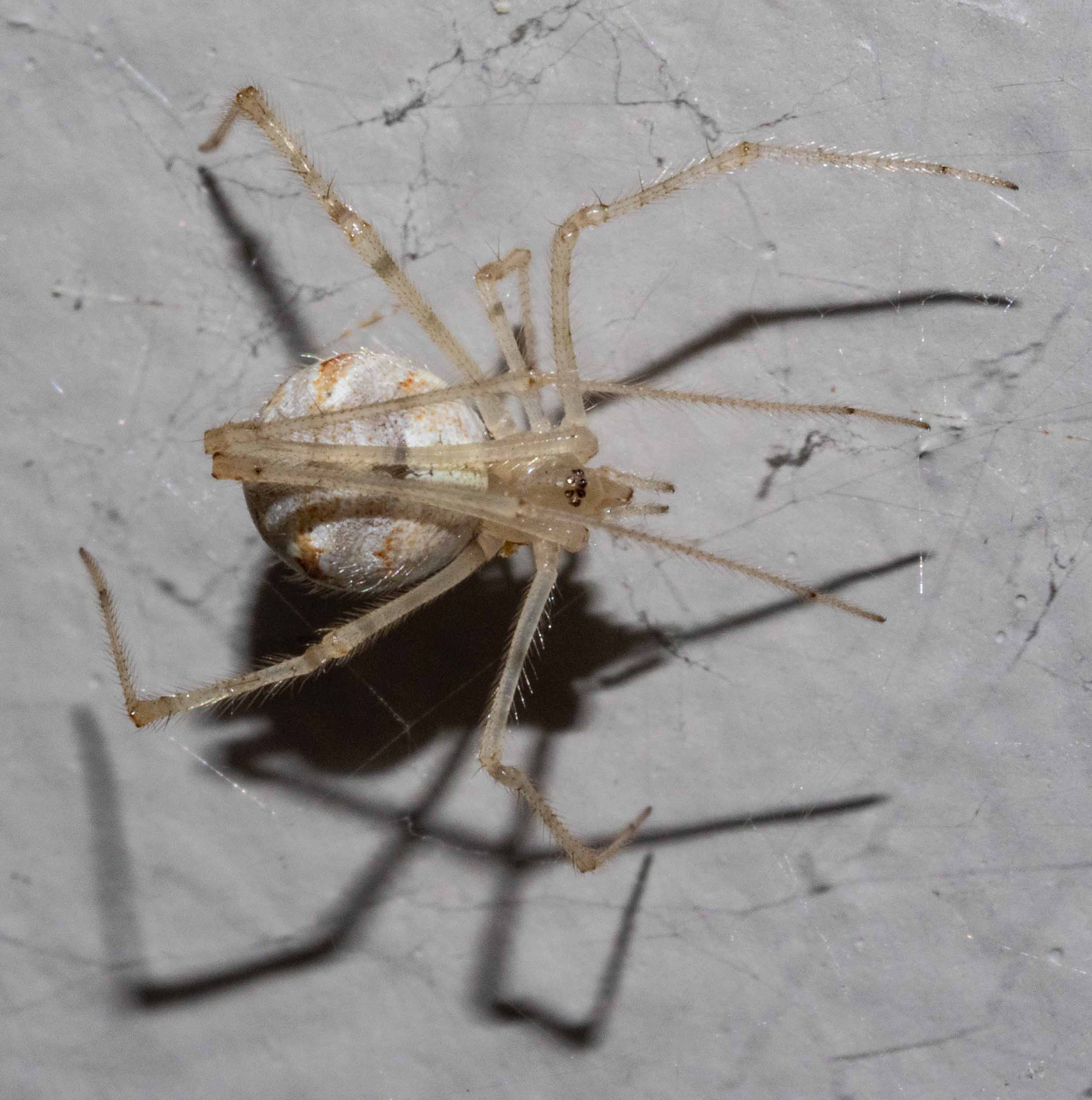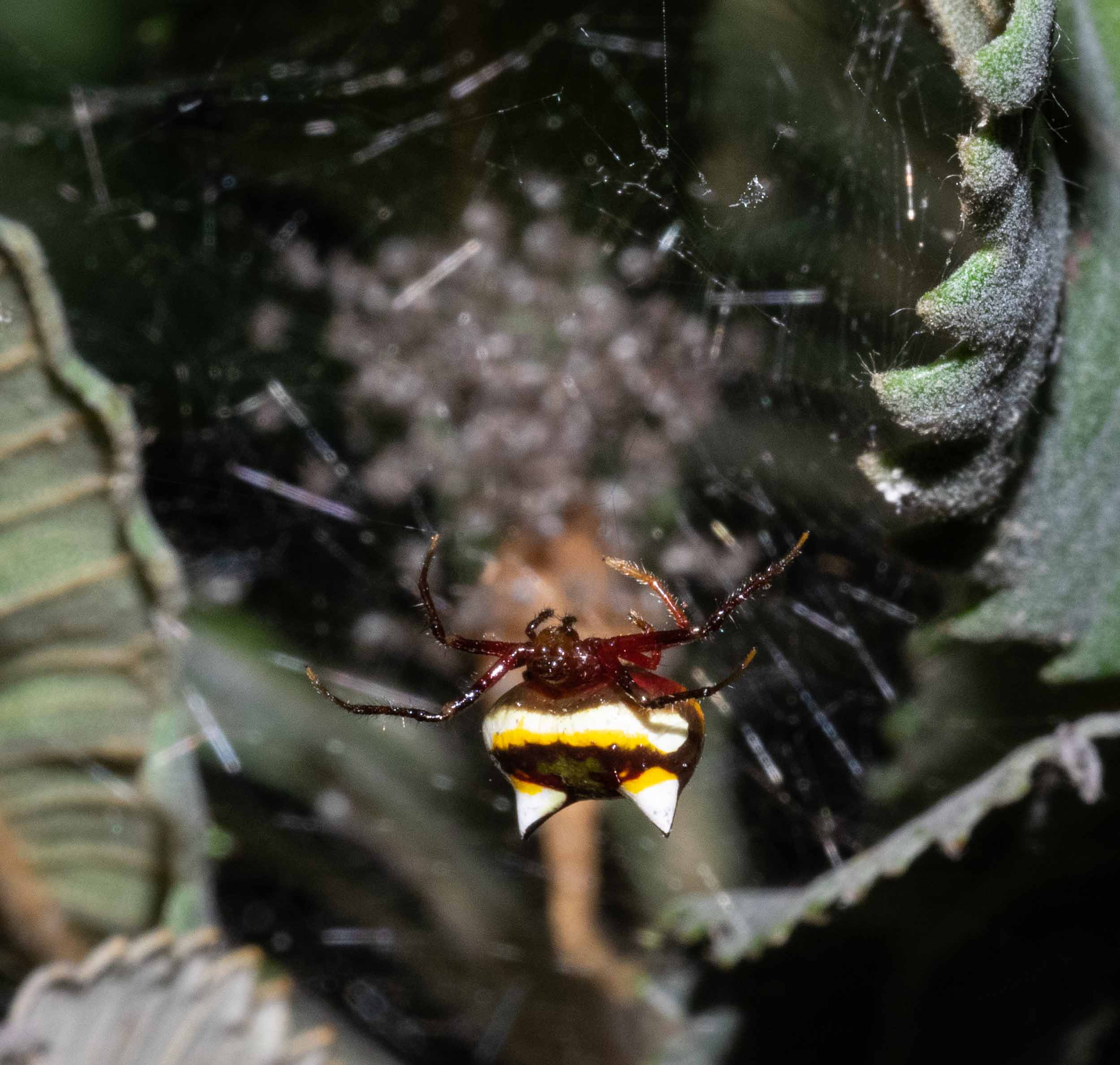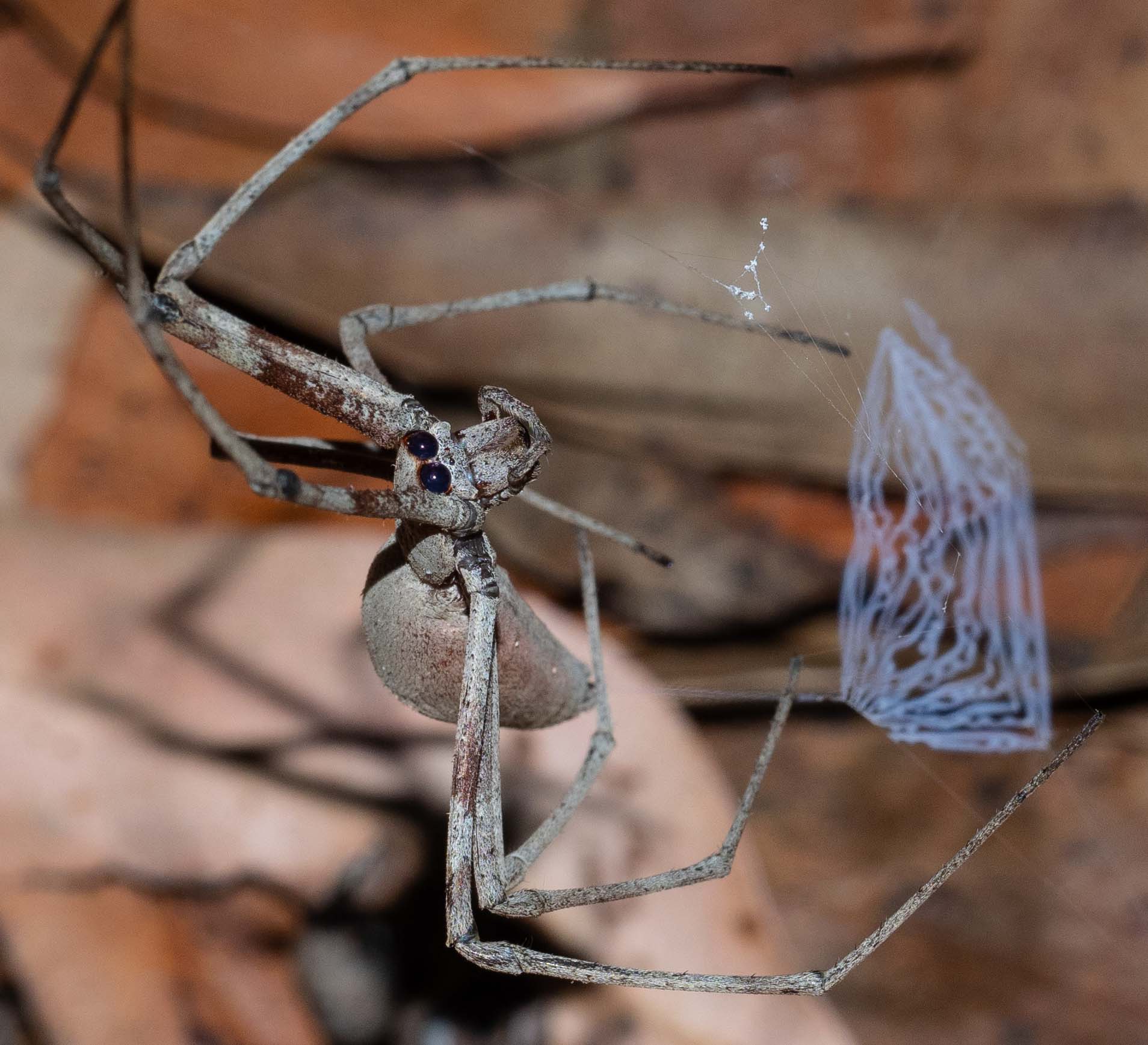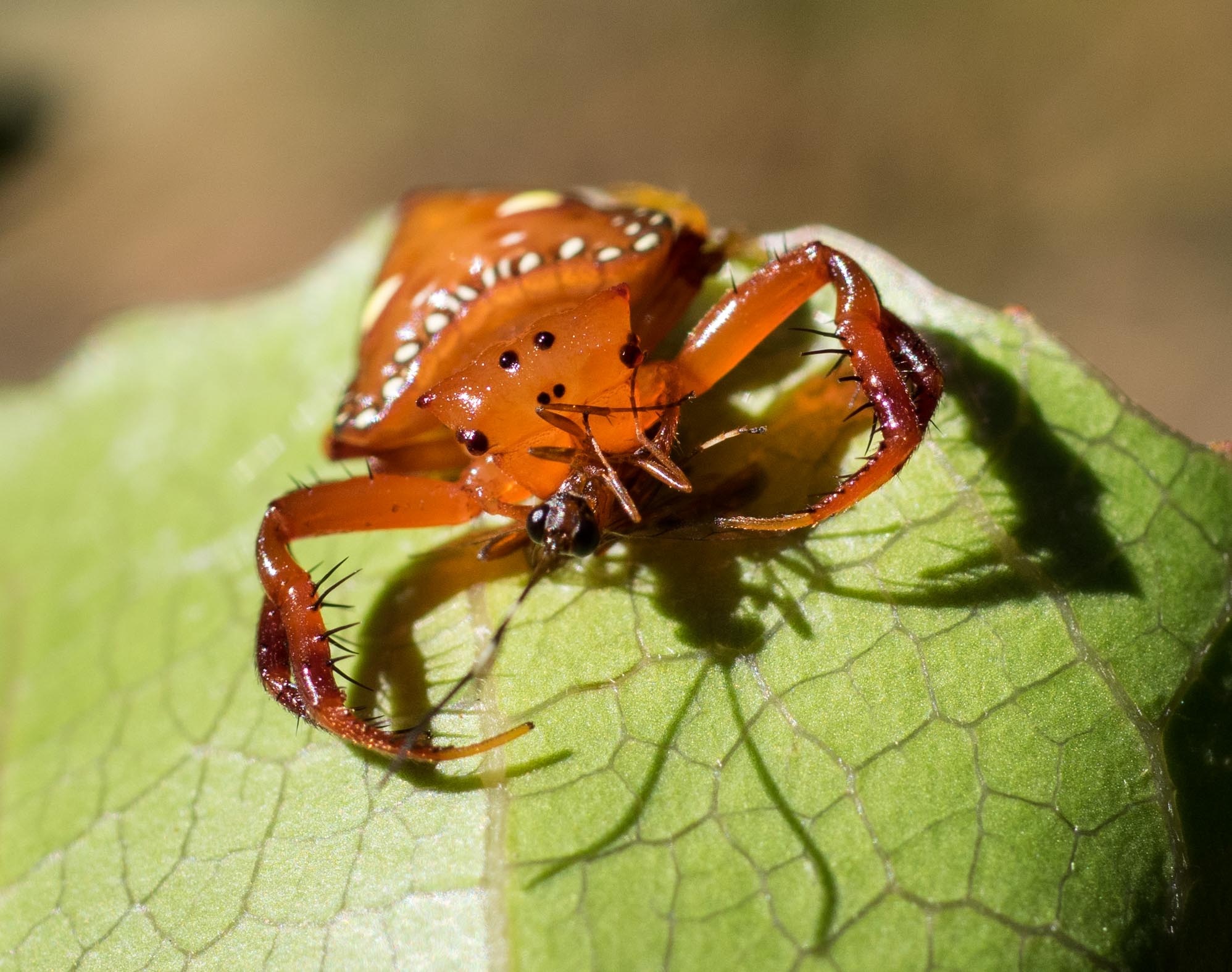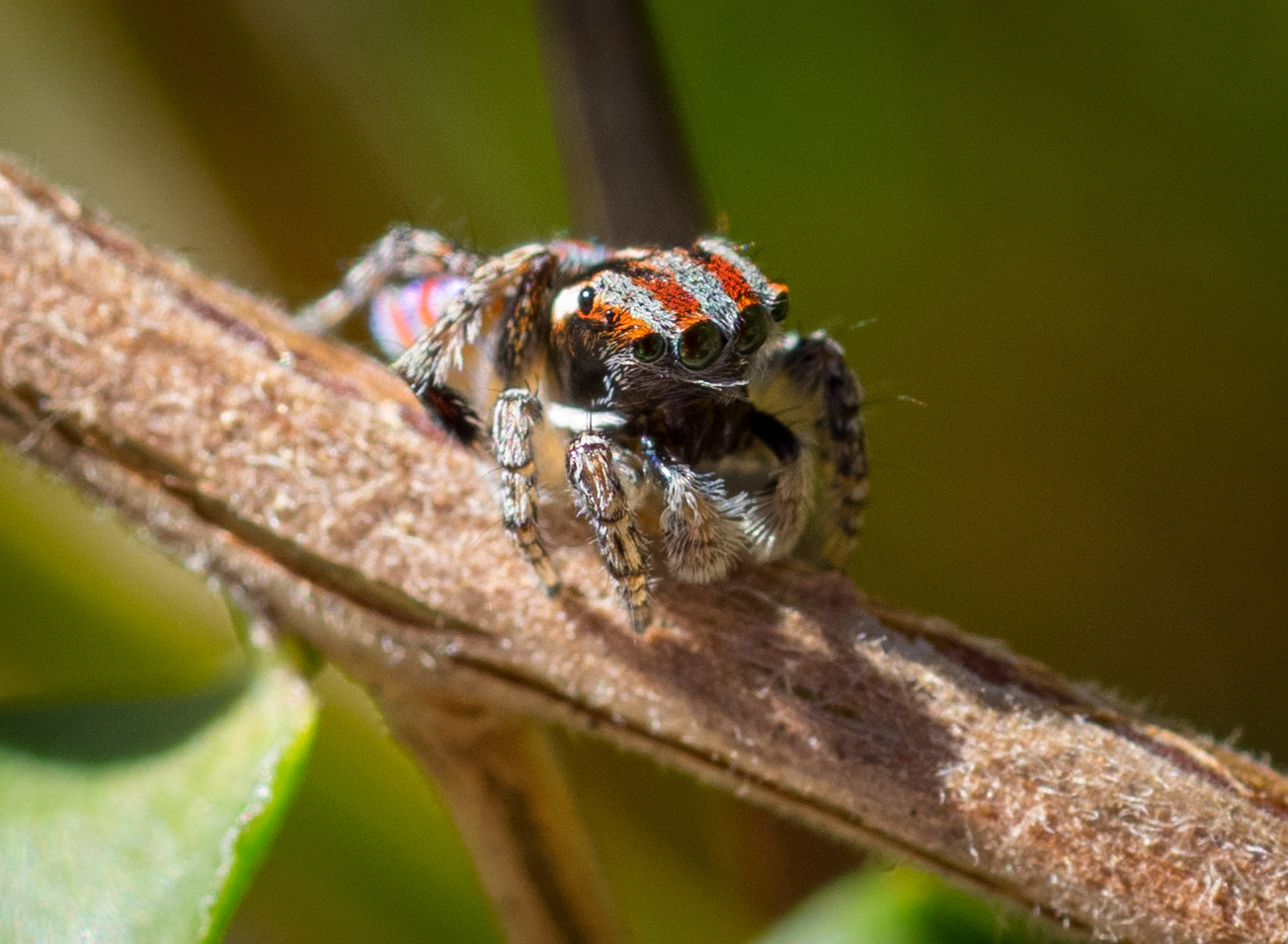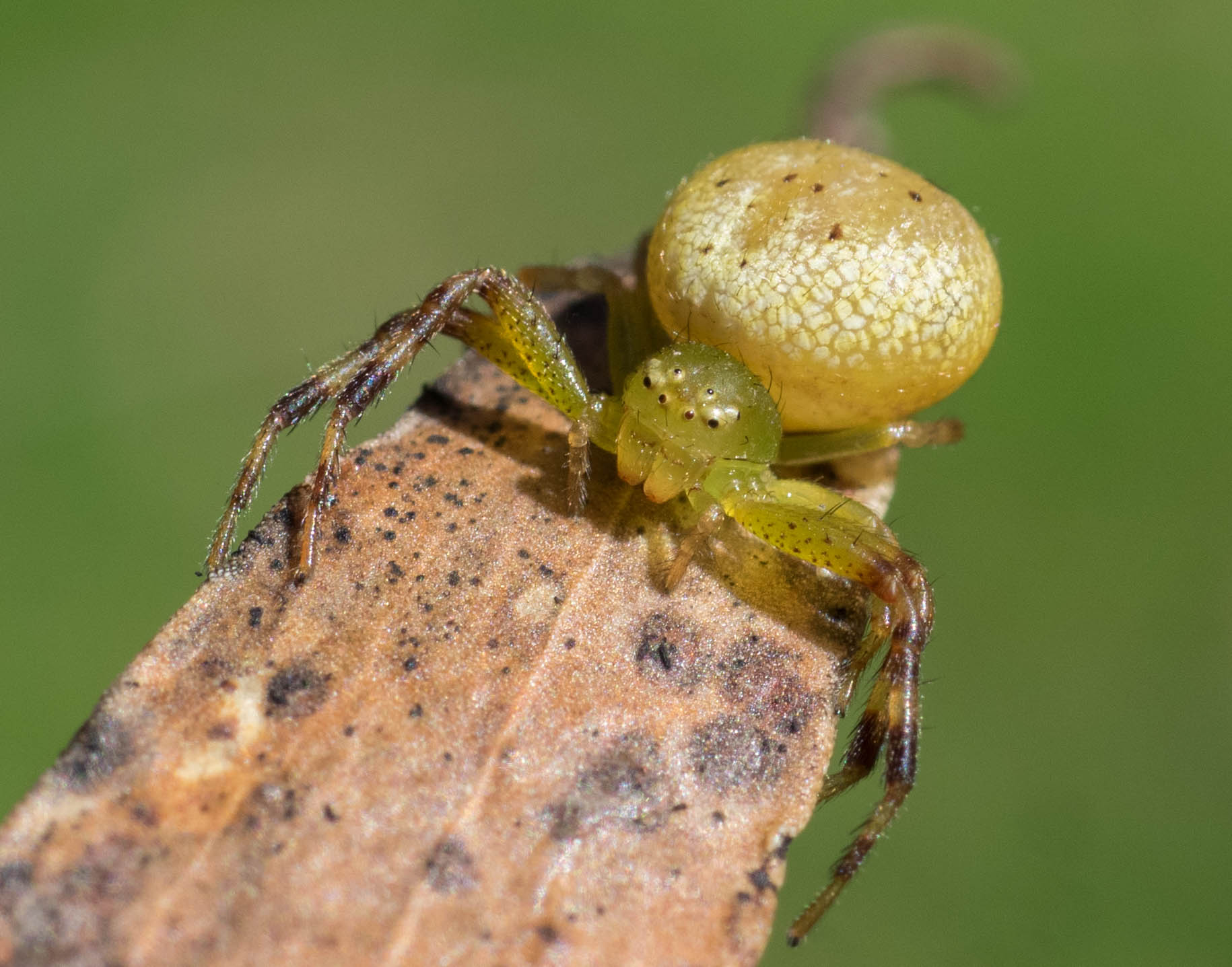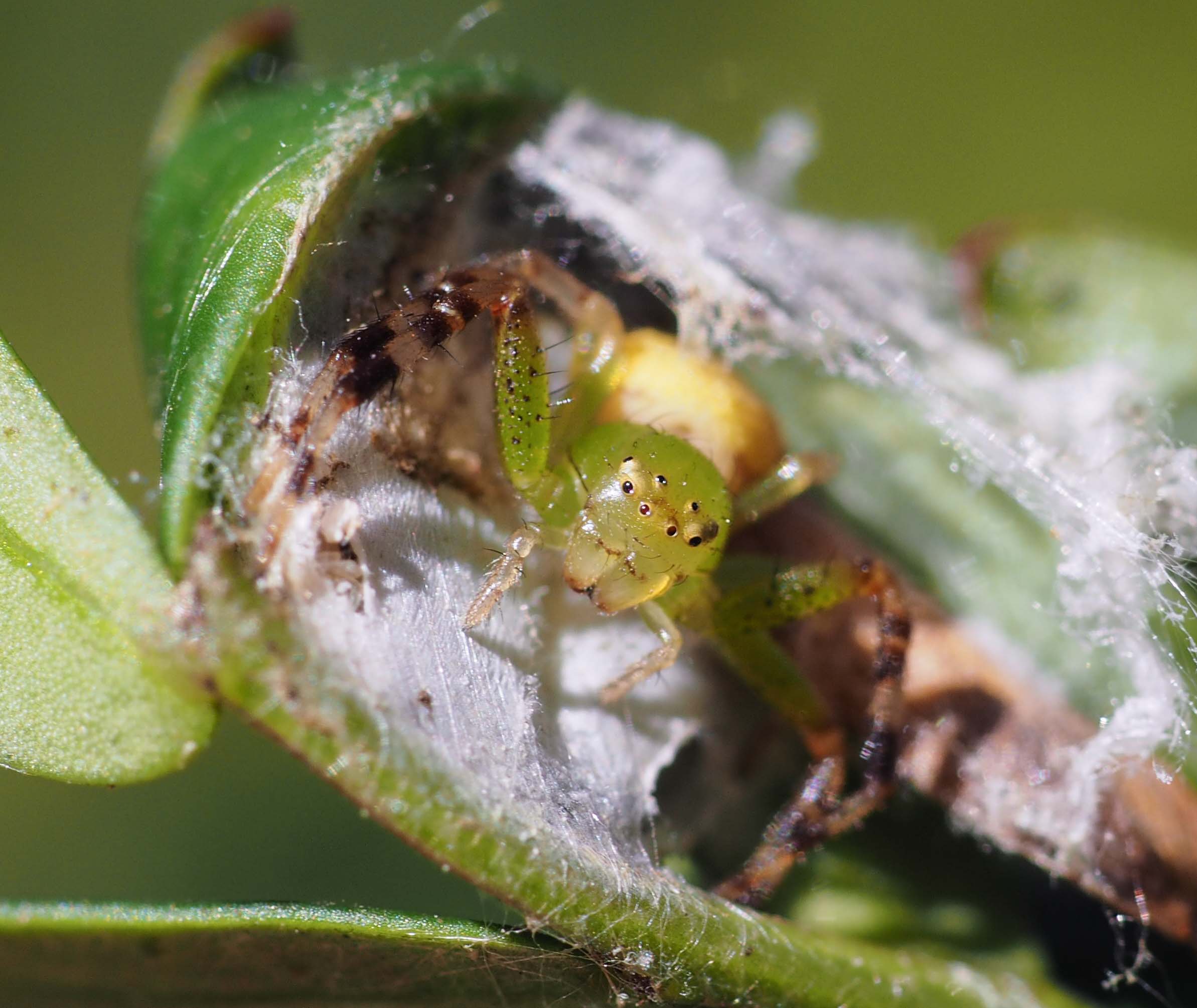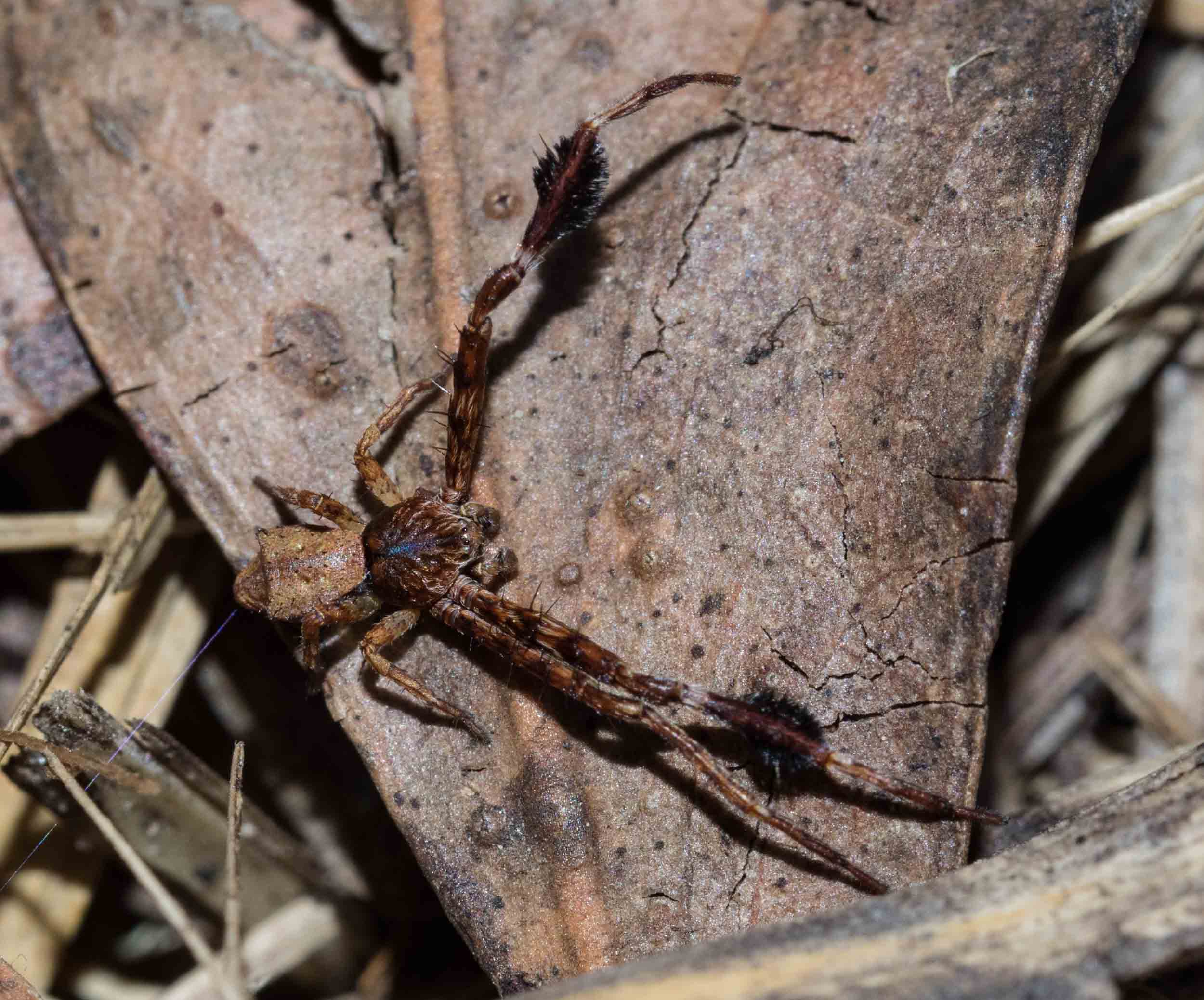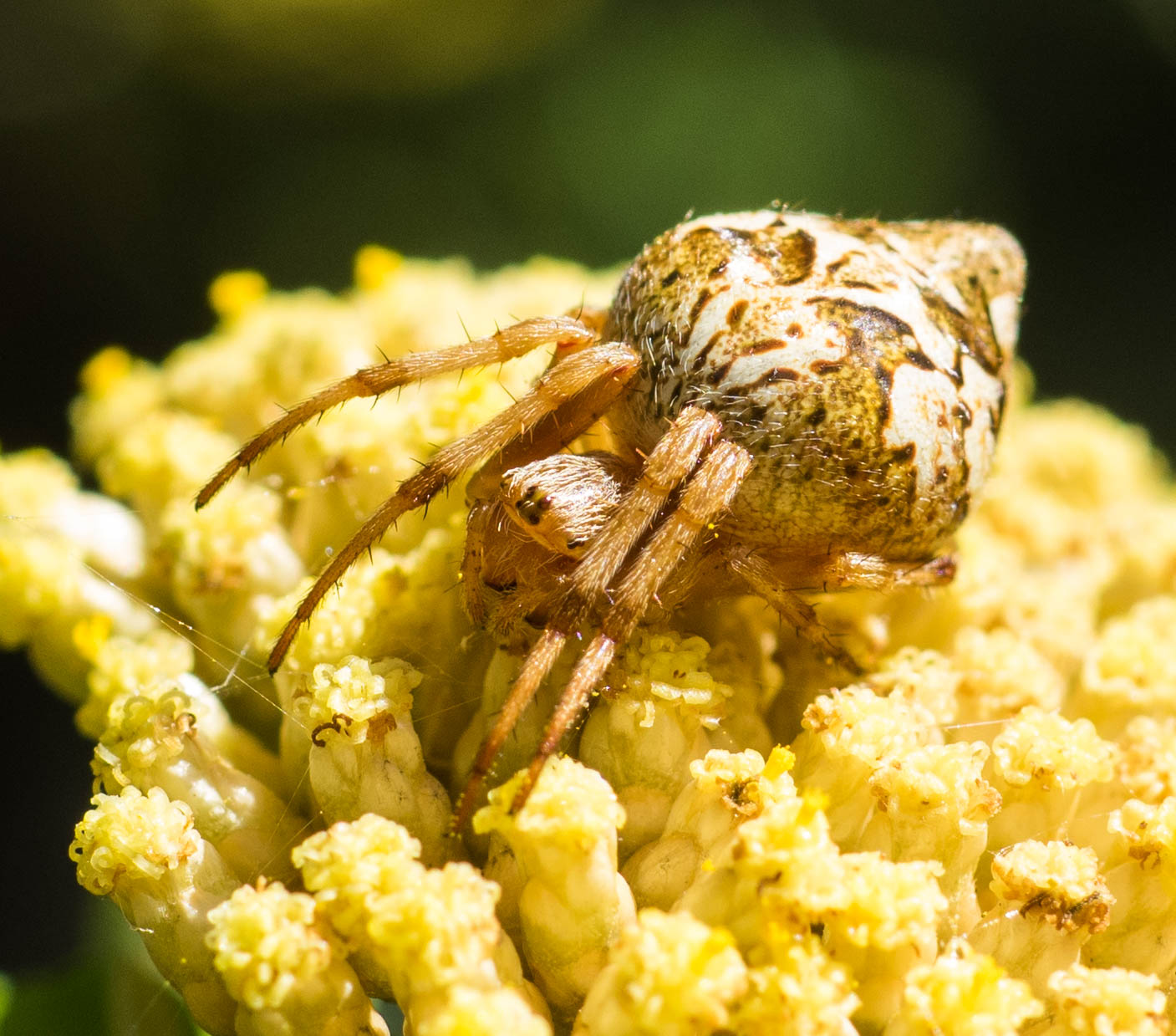The Net Caster - a special spider and a special event

Think 'spider web' and you probably imagine a wheel-shaped spiral hanging vertically in the air, attached at strategic points to shrubbery, designed to trap unwary flying insects. This is indeed the classic web design used by many spiders - in particular, orb-weavers in the family, Araneidae. But there are many variations on the design of the web and how it is used.
Last Summer I noticed a reasonably large spider in the wire netting around our lemon tree. During the day it lay quite motionless, suspended vertically from the wire by a few fine silk threads.
A bit of research enabled me to identify the spider as Deinopis subrufa, the Ogre-faced Netcaster. This is apparently a very common spider but it is not often sighted - probably because of its inactive diurnal habits. In a more natural setting than chicken wire, it is also well camouflaged. My reading also told me about an amazing method of prey capture - net casting - used by spiders in the Deinopidae family, to which Deinopis belongs. So I headed out late at night with camera in hand hoping to witness that trickery.

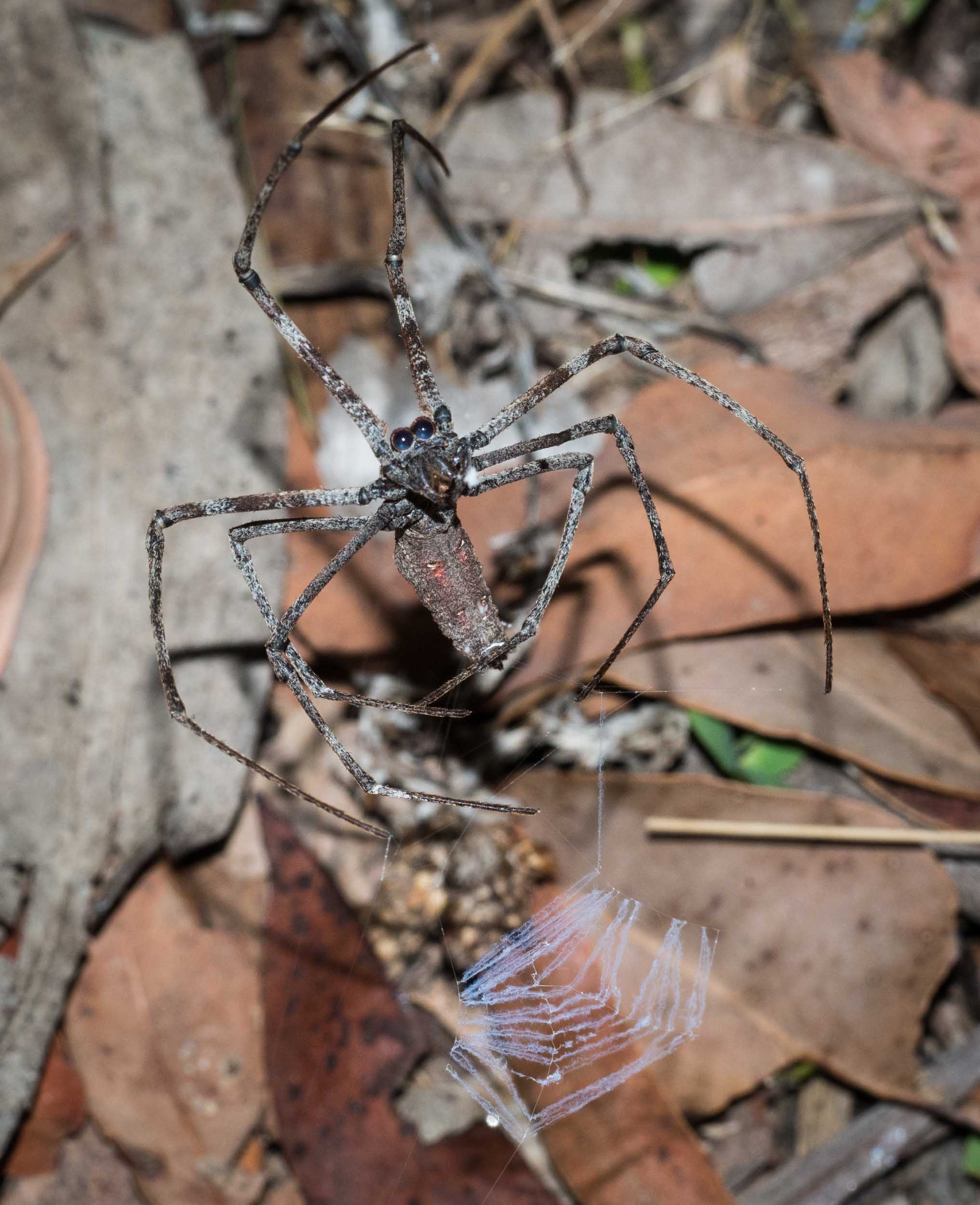
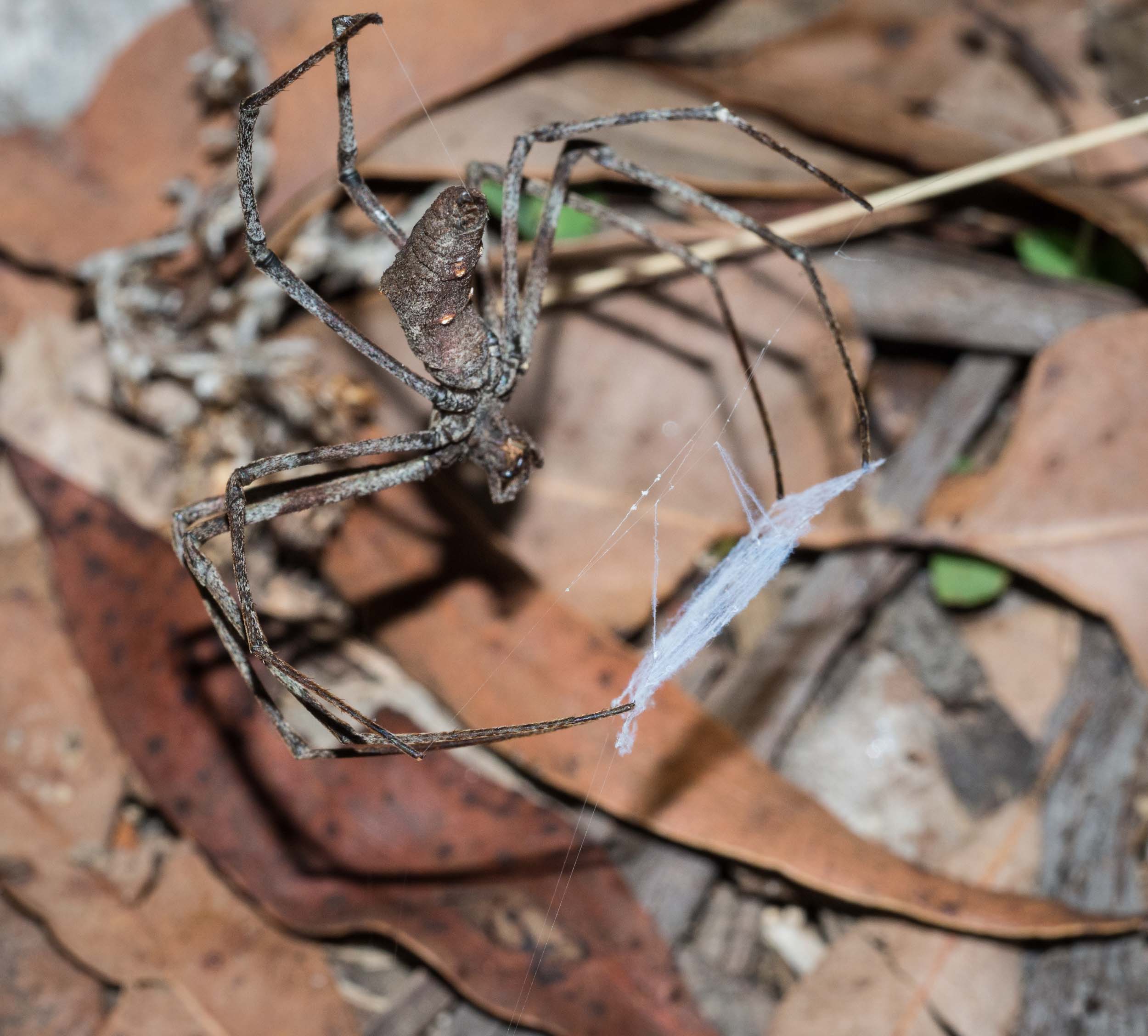

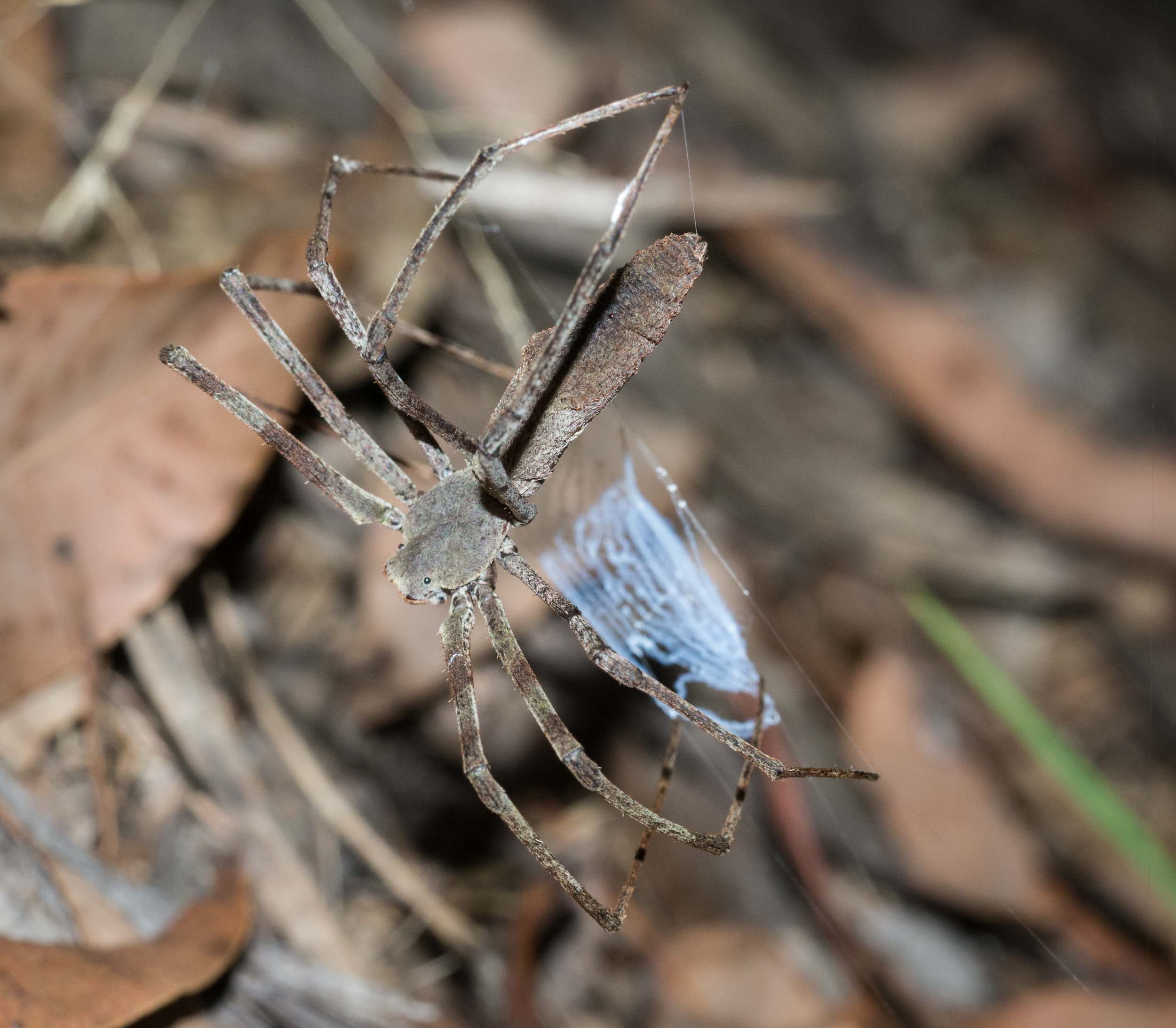
I was very fortunate to witness this beauty - "ogre-faced" is such an inappropriate description to my mind - weaving her net. She started construction at about 10pm and within 45 minutes she had fashioned a wonderful captive net, made from a special type of woolly silk. She then moved into an eyes-down position, suspended from the chicken wire by silk threads, holding her net open with her front two pairs of legs.
At that point, I figured I had disturbed her enough so I went back inside and left her to her devices. Apparently, the spider watches the ground beneath intently, waiting for a prey item - cockroach, beetle or other large insect - to pass by. She then rapidly drops down while stretching the net open and covers the prey in her trap.
Being a nocturnal hunter, but still relying on vision, Deinopis has evolved a pair of enormously enlarged eyes - the middle pair in the hind row. The large size of the eyes, coupled with a greatly expanded area of membranes containing photoreceptors, give the spider extraordinary light sensitivity. However, as spiders do not have an iris to limit the amount of light entering the eye, those photoreceptor membranes are destroyed as soon as the sun strikes her the next day. Deinopis has to rebuild them every night before hunting - as well as make a new casting net. What a cool creature!
I didn't realise just how lucky I had been to witness this event until after we had made contact with Robert Whyte - author of 'A Field Guide to Spiders of Australia', which was launched in June 2017. I very happily consented to his request to include one of my Deinopis photos in his book. You can find it on page 132.

